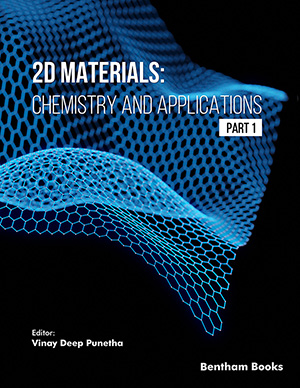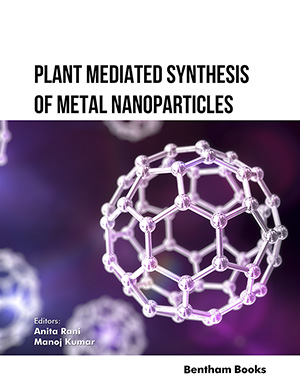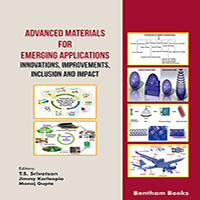
Abstract
Background: Non-wood plant parts provide unique opportunities for cellulose for paper manufacture and offer advantages over wood, such as less harsh chemicals and lower lignin content.
Objective: This review examined several cellulose extraction procedures from non-wood sources, such as leaves, stems, grass, straw, fruit peels, and husks.
Methods: Acid and alkali extraction, oxidation, and bleaching were the main techniques used. Corresponding mechanical properties of cellulose derivatives were also reviewed, with tensile strength being the most reported property, with variability among the species and products. Additives were also explored to improve the properties of non-wood paper.
Results: Further processing of cellulose into nanocrystalline cellulose enabled the manufacture of biodegradable composites with a wide range of utilities in wastewater treatment, reinforcing materials, alternatives to plastics and circuit boards for nanotechnology applications. Various methods now available for cellulose extraction provide scientists with several efficient options for different plant materials with beneficial properties.
Conclusion: Non-wood cellulose has found its uses in several industries, but further research may consolidate these attempts.
Keywords: Non-wood, cellulose, paper, mechanical strength, additives, composite.
[http://dx.doi.org/10.7763/IJCEA.2013.V4.281]
[http://dx.doi.org/10.1016/j.jmrt.2021.06.014]
[http://dx.doi.org/10.1515/npprj-2019-0064]
[http://dx.doi.org/10.3390/fib10020016]
[http://dx.doi.org/10.1016/j.rser.2022.112706]
[http://dx.doi.org/10.1016/j.tfp.2022.100331]
[http://dx.doi.org/10.3390/f12121720]
[http://dx.doi.org/10.1016/j.jclepro.2009.10.008]
[http://dx.doi.org/10.1002/anie.200460587] [PMID: 15861454]
[http://dx.doi.org/10.1007/s10570-019-02828-9]
[http://dx.doi.org/10.1186/s13068-018-1262-1] [PMID: 30288174]
[http://dx.doi.org/10.1016/j.molliq.2022.118577]
[http://dx.doi.org/10.1088/1757-899X/857/1/012021]
[http://dx.doi.org/10.3390/resources10120121]
[http://dx.doi.org/10.3390/ma14133673] [PMID: 34279243]
[http://dx.doi.org/10.3389/fsufs.2022.1087867]
[http://dx.doi.org/10.1016/j.aaspro.2014.11.034]
[http://dx.doi.org/10.1016/j.carbpol.2022.119918] [PMID: 36088021]
[http://dx.doi.org/10.1007/s13204-019-01242-8]
[http://dx.doi.org/10.1016/j.carbpol.2009.10.046]
[http://dx.doi.org/10.1016/j.carbpol.2009.03.013]
[http://dx.doi.org/10.1016/j.indcrop.2021.113780]
[http://dx.doi.org/10.12688/aasopenres.13182.1] [PMID: 33623862]
[http://dx.doi.org/10.1016/j.jmrt.2020.10.102]
[http://dx.doi.org/10.1177/1558925020950724]
[http://dx.doi.org/10.1016/j.jece.2017.11.026]
[http://dx.doi.org/10.1016/j.ijbiomac.2018.01.098] [PMID: 29358134]
[http://dx.doi.org/10.1007/s10570-022-04835-9]
[http://dx.doi.org/10.1088/1755-1315/237/5/052053]
[http://dx.doi.org/10.1177/0731684414542991]
[http://dx.doi.org/10.1007/s10924-022-02646-4]
[http://dx.doi.org/10.1155/2020/9765950]
[http://dx.doi.org/10.1016/j.jmrt.2018.12.015]
[http://dx.doi.org/10.3389/fenrg.2021.608825]
[http://dx.doi.org/10.1038/s41428-021-00580-1]
[http://dx.doi.org/10.1007/s10811-021-02643-5]
[http://dx.doi.org/10.1021/acs.chemrev.2c00477] [PMID: 36622272]
[http://dx.doi.org/10.1007/s10570-021-04403-7]
[http://dx.doi.org/10.1007/s10924-020-01974-7]
[http://dx.doi.org/10.2115/fiberst.2020-0039]
[http://dx.doi.org/10.1007/s10965-022-03366-y]
[http://dx.doi.org/10.1016/j.carbpol.2022.120129] [PMID: 36241330]
[http://dx.doi.org/10.1007/s10924-020-01854-0]
[http://dx.doi.org/10.1007/s10570-022-04584-9]
[http://dx.doi.org/10.1016/j.jclepro.2016.09.179]
[http://dx.doi.org/10.1016/j.jmrt.2019.11.017]
[http://dx.doi.org/10.1016/j.matdes.2010.06.004]
[http://dx.doi.org/10.4067/S0718-221X2021000100456]
[http://dx.doi.org/10.1016/0926-6690(93)90011-W]
[http://dx.doi.org/10.1007/s10570-022-04807-z]
[http://dx.doi.org/10.1039/D1RA02390J] [PMID: 35479695]
[http://dx.doi.org/10.1515/npprj-2019-0002]
[http://dx.doi.org/10.1016/j.carbpol.2022.120189] [PMID: 36876804]
[http://dx.doi.org/10.1016/S0167-2991(07)81036-6]
[http://dx.doi.org/10.1016/j.polymertesting.2023.107964]
[http://dx.doi.org/10.3183/npprj-2017-32-03-p324-335]
[http://dx.doi.org/10.1016/j.carbpol.2022.120101] [PMID: 36241324]
[http://dx.doi.org/10.1016/j.carbpol.2022.120118] [PMID: 36241328]
[http://dx.doi.org/10.1016/j.carbpol.2022.120082] [PMID: 36241320]
[http://dx.doi.org/10.1021/acssuschemeng.8b00771]
[http://dx.doi.org/10.1007/s10853-009-3874-0] [PMID: 32836382]
[http://dx.doi.org/10.1155/2018/8973643]
[http://dx.doi.org/10.1177/0967391119867236]
[http://dx.doi.org/10.1016/j.biortech.2015.01.058] [PMID: 25656863]
[http://dx.doi.org/10.1016/j.foodhyd.2022.107484]
[http://dx.doi.org/10.1016/B978-0-323-85835-9.00025-8]
[http://dx.doi.org/10.3390/polym14153206] [PMID: 35956720]
[http://dx.doi.org/10.1080/17518253.2022.2121183]
[http://dx.doi.org/10.1002/chin.201142280]
 19
19 1
1






















